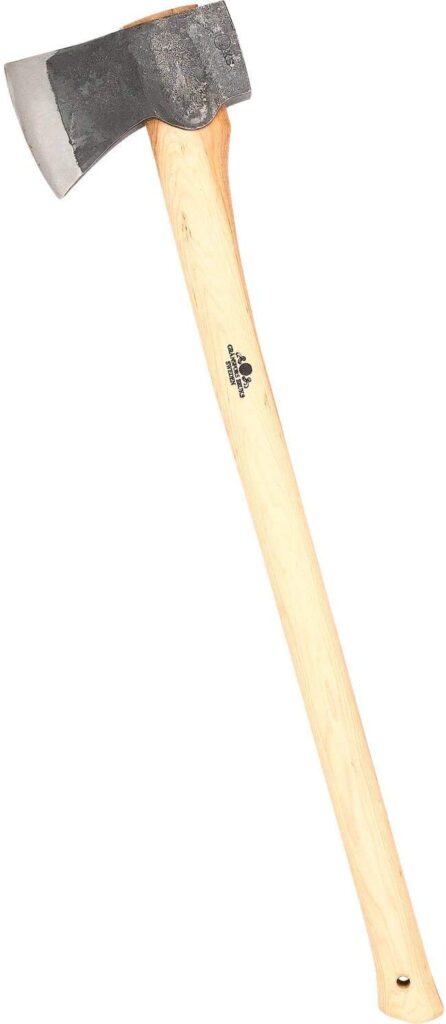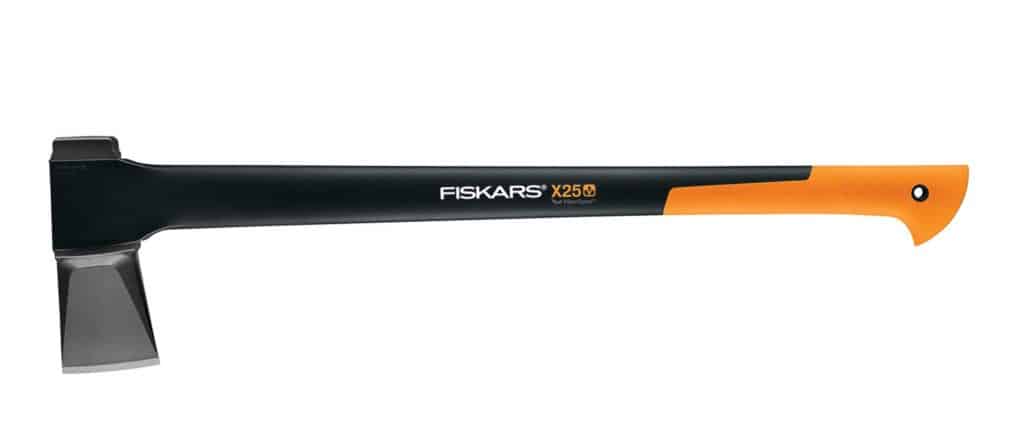Fiberglass handles provide durability, lightweight design, and lower maintenance compared to wood handles. However, wood handles, especially hickory, offer better shock absorption, a natural feel, and easy replacement. Steel handles are the most durable but lack shock absorption properties.
When shopping for an axe, you might be stuck with a dilemma. Should you get an axe with a wood, steel, or fiberglass handle? This is a question axe enthusiasts love to debate and argue about. For good reason, too – if you’re looking to buy a tool that will serve you well for years to come, you want to be confident that it’ll fit the job. An axe handle should take as much use and abuse as you can put it through doing the jobs that need to be done.
So what is the best handle material for an axe? This article will weigh the pros and cons of each type of handle, examine what kind of situations and tasks they’re suited for, and hopefully help you decide. Keep reading to find out more!
- 31-inch Hickory Handle
- Hand Forged 3.3 lb Axehead
- 20 Year Warranty
- Made in Sweden from the World's Premier Forge
- Shocked Reduction Composite Handle
- Low Friction Coating
- Single Piece, Full-Tang Design
- Affordable Price Tag
- Full-Tang Forged Steel Design
- Includes a Heavy Duty Sheath
- Patented Shock Reduction Grip
- Made in USA
Table of Contents
Wood Handles
Wood is the original axe handle. Many axe enthusiasts still consider ash or hickory handles to be the best you can have for any type of axe, because they look and feel great in the hands.
Wood handle axes are great at absorbing shocks, which can be annoying or even hazardous to your health if you have joint problems. Wood handles are also the cheapest of the three types and handles temperature extremes best. It won’t get brittle or unpleasant to hold in real cold, nor will it feel “whippy” in real heat, like cheap fiberglass handles might.
The downside to wood is that it is sensitive to the environment and is the easiest to break out of the three materials. Wood will swell and shrink depending on temperature, humidity, etc. Wood will also soak up water and whatever crap gets on it – that’s one reason why most fire departments are moving to axes with fiberglass handles. If you do a lot of dirty work with your axe, a wood handle will soak it all up. Wood is the most susceptible to overstrike damage, and the bigger and heavier your axehead, the easier it is to wreck your wooden handle if you miss a swing.
Despite all of that, wood handles are also the easiest to replace. You can also modify them to fit your needs – shorten them, change their shape, and so on.
People working in the forestry industry swear by axes with wooden handles. They say that wood can’t be beaten for balance, grip, and ease of use. And the highest-quality axes made today – think Gransfors Bruk, Hults Bruk, and the custom-made axes by craftsmen like Neeman Tools – are all made with wooden handles. For many, the old ways are the best ways.
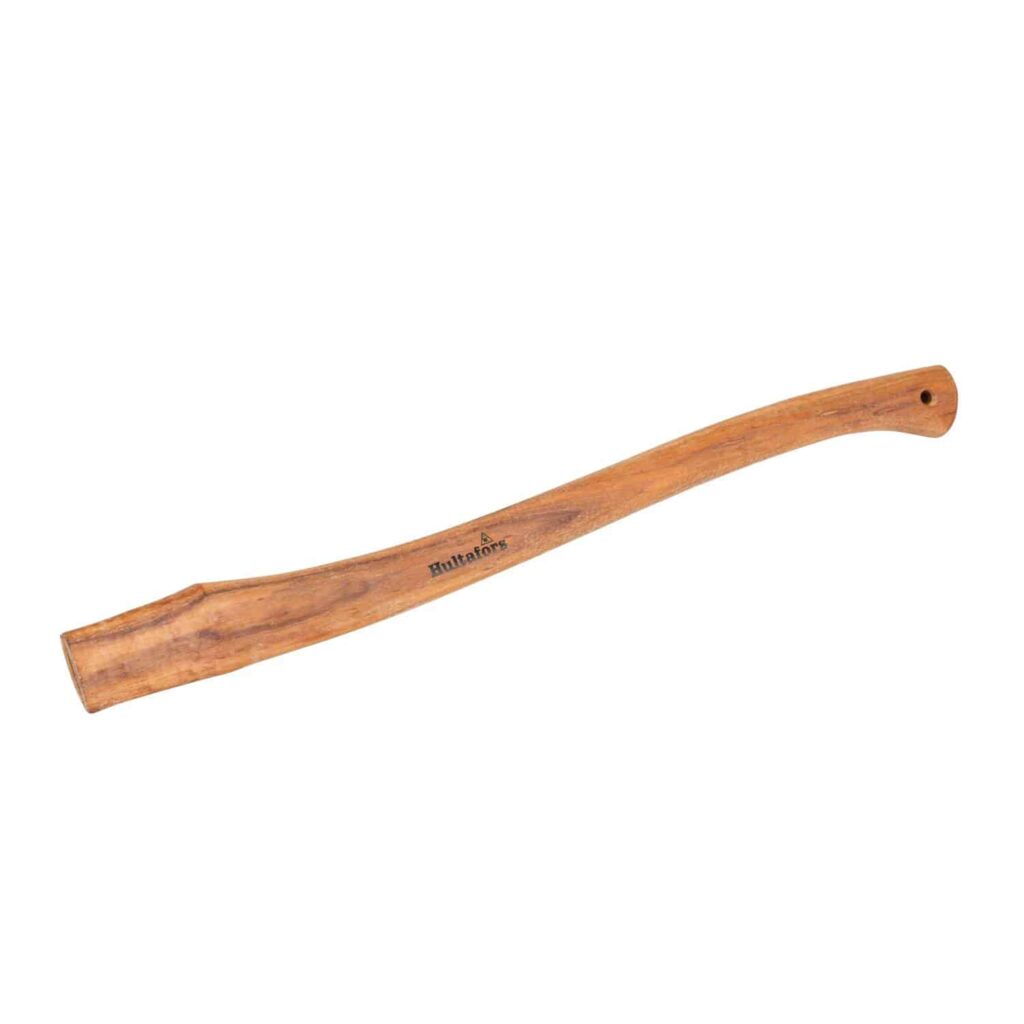
Fiberglass Handles
The main rival to wood is fiberglass. Ever since axe-makers began to first use it for axe handles some 40 or 50 years ago, it has caused a lot of debate among axe users and enthusiasts.
What’s true is that fiberglass handles are tougher and can take more punishment than traditional wooden handles. They are more expensive but have great shock absorption properties and are very durable. One big advantage of fiberglass handles over wooden handles is that they are not nearly as sensitive to the environment. A fiberglass axe can fall into swamp muck, spend the night in the back of pickup in freezing conditions, be covered in oil or industrial chemicals and, in most cases, be none the worse for wear (the exceptions are strong acids or bases.) The same can’t be said for wooden handles – they swell, shrink, and soak up whatever gunk they come into contact with.
The downside to fiberglass handles is that they are hard to replace, unlike wooden ones – in fact, replacement handles are generally unavailable. Some manufacturers, like Fiskars, provide a lifetime guarantee, so that even if your fiberglass handle breaks, you’ll be able to get a replacement axe. Fiberglass handles also become more brittle in serious cold, so the advantage in durability over wood becomes less clear-cut if you’re doing a lot of chopping or splitting in freezing temperatures.
Still, there are good reasons why fire departments across the US are transitioning to fiberglass axes. Tough, abusive work – such as chopping roots, splitting lots of tough logs or rounds of wood (with the common risk of overstrike in such work), or even (in the case of firefighters) chopping things like door hinges – is where a fiberglass handle has an advantage over a wooden axe.
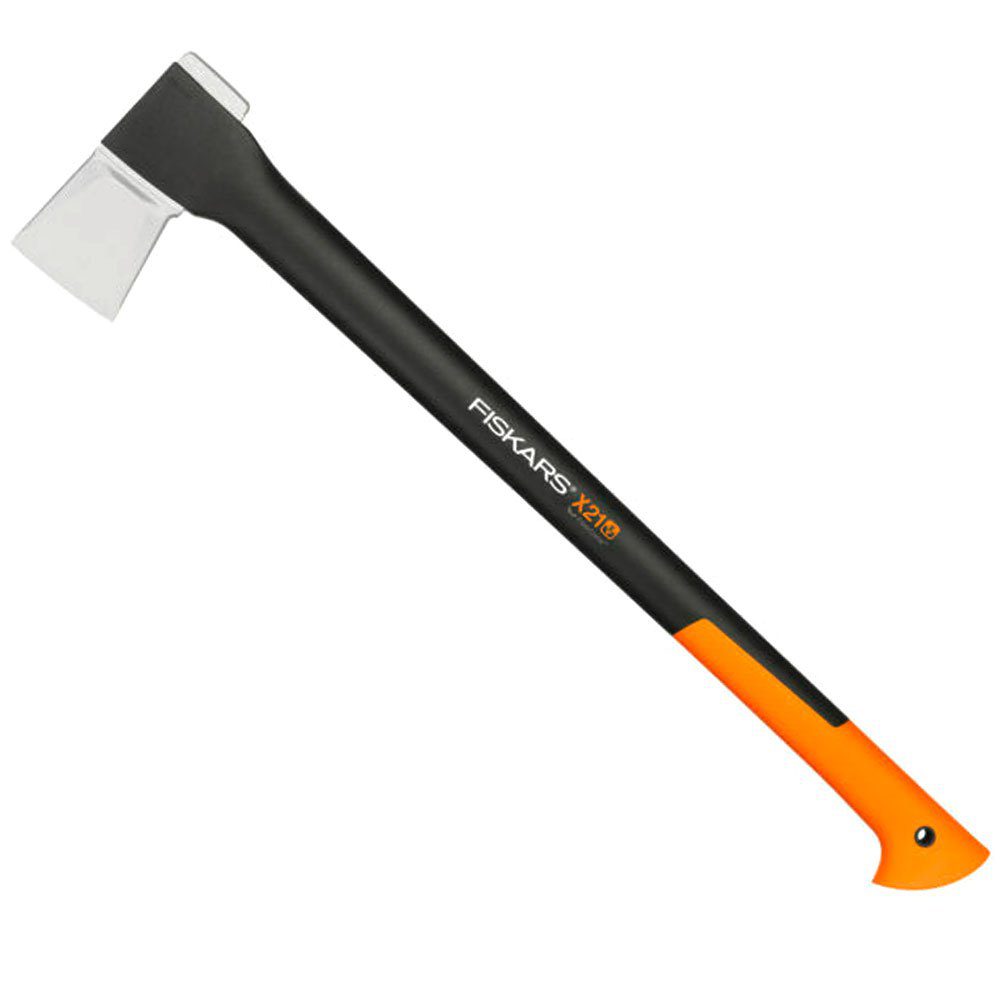
Steel Handles
Axes with steel handles are probably the rarest of the three types. In terms of sheer durability, it’s hard to beat a steel-handled axe, especially since most such axes are one piece of metal – the axehead being welded to the handle. On the other hand, steel handle axes transmit the most shock into your hands, which is terrible if you’re doing a lot of cutting and chopping and can cause joint problems in the long run. Some axe brands, such as Estwing, are known for their steel-handled axes, which also come with patented shock-reduction grips. If you’re thinking of buying a steel-handed axe without some grip that cushions the shock from strikes, you should consider buying leather gloves to use with it.
Steel-handled axes are also the heaviest of the three types, although some designs – especially tomahawks, camping axes, and hatchets – feature hollow steel handles that reduce the total weight of the tool.
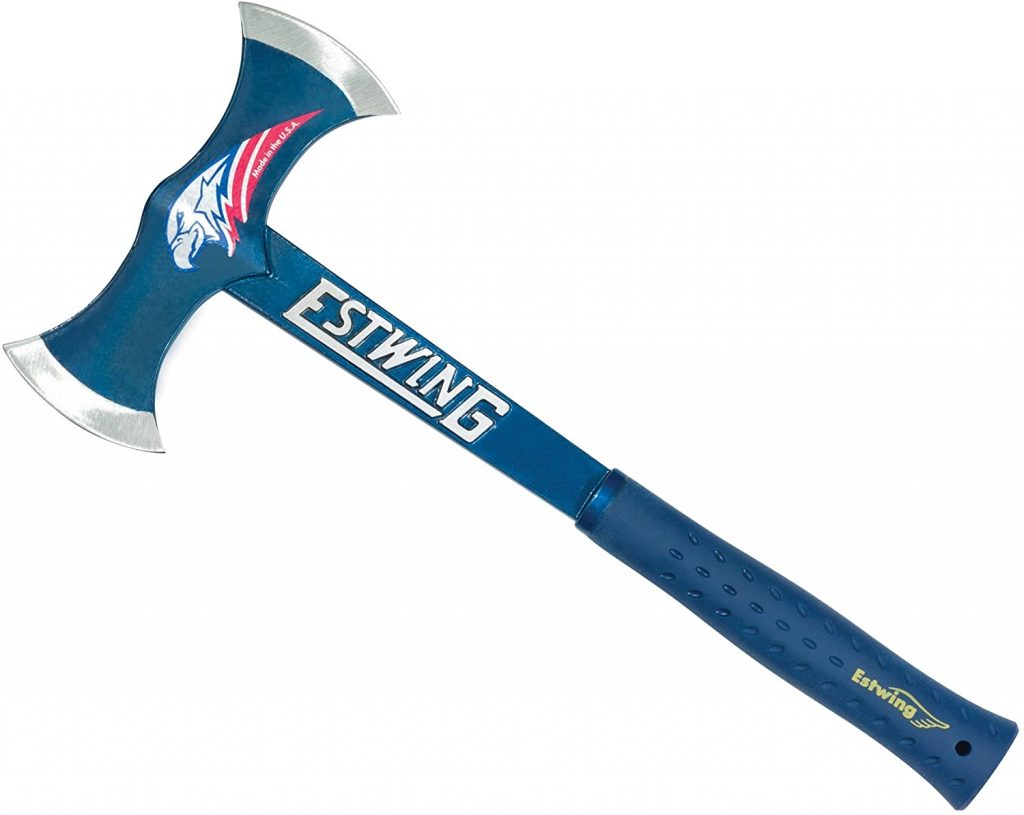
Conclusion
Each type of axe handle has its upsides and downsides. The key to choosing the right axe and type of handle is to figure out your needs and what you’ll be using it for.
Are you planning on only using the axe to fell trees, cut off their limbs, buck (divide) them into several logs, and split small to medium-sized logs and rounds of firewood? Will you take good care of it, keeping it out of the elements? An axe with a wooden handle will serve you well and comfortably.
Will you be doing dirty or tough work such as chopping tree roots, working in a polluted area or cleaning up after a fire, splitting large, tough logs or rounds of wood? Do you want to be able to throw the axe in the back of your pickup and forget about it for a day or ten? Then a fiberglass-handled axe might last longer and serve you better.
Finally, if you need sheer durability, consider if a steel-handled axe is right for you. With it you can chop ice (wood can break when struck on ice, as can fiberglass, which becomes brittle when it is really cold outside), not ever have to worry about the axehead coming off, and be sure that the handle won’t break after one overstrike or missed swing too many.
Good luck making your choice!

